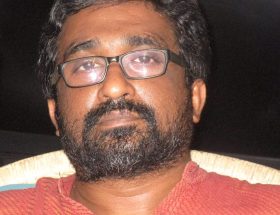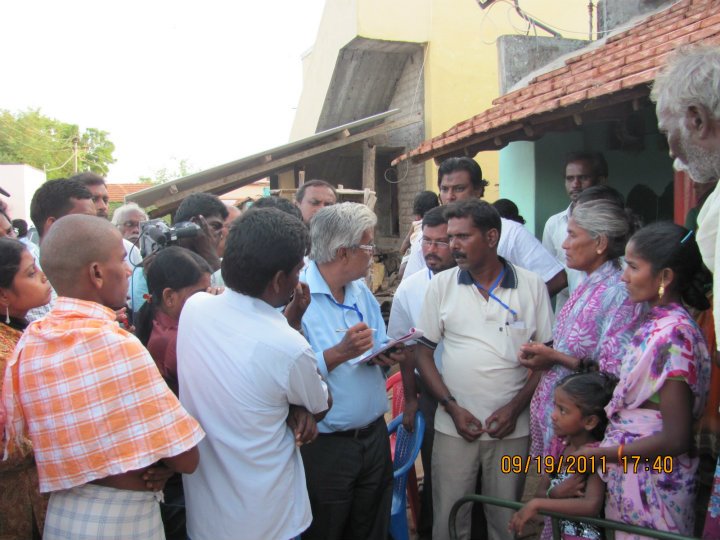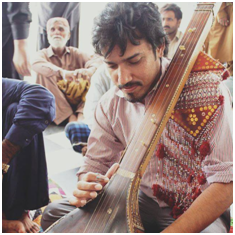Umar Nizar
 The brutal murder of P. Jeyaraj and his son Beniks in police custody in Sathankulam in Tamil Nadu invokes the Nirbhaya case in its brutality, the only difference in this case being that the perpetrators were policemen. The atrocious and horrific nature of the torture and the brutalities inflicted upon the victims have terrorized most people into a subdued silence. Such psychotic violence goes beyond the pathology of sadistic policemen and has its roots in historic caste and gender based violence. The historical memory of such brutalities goes far back into the ancient past of southern India, refuting received notions of progressivism as well as those of a glorious golden age.
The brutal murder of P. Jeyaraj and his son Beniks in police custody in Sathankulam in Tamil Nadu invokes the Nirbhaya case in its brutality, the only difference in this case being that the perpetrators were policemen. The atrocious and horrific nature of the torture and the brutalities inflicted upon the victims have terrorized most people into a subdued silence. Such psychotic violence goes beyond the pathology of sadistic policemen and has its roots in historic caste and gender based violence. The historical memory of such brutalities goes far back into the ancient past of southern India, refuting received notions of progressivism as well as those of a glorious golden age.
Insertion of stakes and such implements into bodily orifices (impalement) was historically practised in Kerala and Tamil Nadu as an extreme form of punishment. The public nature of the execution and its almost demoniacal violation of the human corpus, were oriented towards scalding the collective psyche of that community upon which it was inflicted. PK Balakrishnan in his ‘Jathivyavasthayum Kerala Charitravum’ (Caste System and the History of Kerala) gives a graphic account of impalement as it was practised in Kerala. It was mostly directed at those subalterns accused of amorous indiscretions, breaking caste laws of miscegenation. Jeyamohan, a Tamil-Malayalam writer also has delved into the practice of impalement as it existed in Kerala. The victims of impalement later came to be venerated in the form of hero stones and the like. This remains an aspect of hero stone worship in south India that has been seldom studied.
Michel Foucault begins his 1975 work, ‘Discipline and Punish’ with a horrific description of the public torture and execution of Damiens, the would be regicide, in Paris in 1757. The details of impalement as invoked by Balakrishnan and Jeyamohan are almost Foucauldian in their grotesquery. (Rains were considered propitious for victims of impalement since it meant faster disintegration of the body and a quicker death.) The practice of impalement, as in most instances of sexualised violence, served to instil fear and shame in the populace and subjugate them into silence. Genealogically, impalement divides history into perpetrators and the victims. The shame always is attached to the victims and their progeny. Kazhuveride mon, meaning son of someone who was impaled (or executed by hanging), is a common slur in Kerala. History of impalement in south India can be read from the archives of its arts, language, literature, and architecture.
Murals depicting scenes of impalement can be found documented in a built heritage structure in Avudaiyarkoil in Pudukkottai district of Tamil Nadu. ‘Kurumpurai’ written by Gopi, a rare local history of the Wayanad district in Kerala contains the following description: ”the power centre called ‘Ooralan’ existed to govern the temple. The Ooralan and the royal servants and the local overlords and priests started fighting among themselves for selfish interests. There was a complaint that the priest along with a temple functionary performed the votive activities to the deity as per their wishes. The Ooralan (custodian) took decisions without consulting the others. The monks and yogis fought among themselves. The wealth accumulated in the temple was the cause of this infighting and competition. The ‘Perumal’ deity must have had many more deposits such as the necklace embedded with 878 pearls mentioned in the first inscription. The temple complex had by then turned into another free republic and power centre. The temple authorities started having the impression that law and order, and power over life were vested in them. They did not even hesitate to impale those whom they detested which attitude is reflected in the figures of those impaled placed at the temple entrances. These were meant to serve as a warning to those who dared to challenge them”.
Impalement of the Jains is a legend related in the ‘Periya Puranam’ composed by Sekkizhar, minister to the Chola king Kulothinga Chola II, in the 12th CE. Impalement as punitive action was carried out in public, as a deterrent to those bold enough to try and undermine monarchical power. In Kerala and Tamil Nadu, the sovereign assumed the form of a caste sovereign. Though ages have passed and dynasties have risen and fallen, caste and gender violence have remained constants.
The collective trauma deriving from atrocities can be colossal. Rimsha Syed writes about partition and its violence as depicted in Bapsi Sidhwa’s novel ‘Cracking India’ set in Lahore and ‘1947-Earth’ its cinematic adaptation by Deepa Mehta: ‘watching a man being brutally quartered is infinitely more triggering than reading about it'(https://www.browngirlmagazine.com/2018/06/cracking-india-earth-partition/). Sidhwa writes about the scarring of the psyche of a child who had to witness that: ”I select a large life-like doll with a China face and blinking blue eyes and coarse black curls. It has a sturdy, well-stuffed cloth body and a substantial feel. I hold it upside down and pull its pink legs apart. The knees and thighs stretch unnaturally, but the stitching in the centre stays intact. I hold one leg out to Adi. ‘Here’, I say, ‘pull it”’ (Sidhwa, ‘Ice Candy Man’). Damiens the French regicide was drawn and quartered, and so was the Scottish patriot William Wallace. Impalement, unspeakable in its brutality, and carried out with maximum intention by a monarchical state, acquired the sovereign nature of capital punishment, and came to be associated with matters of faith and tribe in the orient, just ashanging and quartering had to do with alleged treason in the west.
Yuval Noah Harari in his ‘Sapiens: A Brief history of Humankind’ mentions the traces of 12 separate wounds, inflicted with spear points and arrow heads, that were found on the skeletal remains of a woman found in a 12,000 year old cemetery in Sudan. Human history has progressed. Monarchies and kingdoms have fallen by the wayside, leading to a democratic republic, with constitutionally granted rights. But still, this form of primordial violence keeps on raising its head. Thus from a big history perspective, the pandemic and impending climate emergency become rather easy excuses to cancel the social contract emerging from enlightenment rationality and to replace it with wanton romance of the mythical, thereby unleashing primordial violence. State intervention in the conflict between two Nadar groups in Tamil Nadu becomes a microcosm of a wider ethical collapse, sacrificial bloodshed and civilizational dissolution.
Franz Kafka in his story ‘In the Penal Colony’ gives a dark allegory of a judicial system wherein the sentence is punitively etched with needles on the prone body of the accused till the point where realization of the corporeally engraved verdict dawns, which also coincides with death. Ivo Andriç in ‘The Bridge on the Drina’ and Mo Yan in ‘Red Sorghum’ have related such extreme forms of torture and punishment inflicted upon an innocent populace by the Ottomans, the Japanese and other marauders. But what sets the southern Indian states of Kerala and Tamil Nadu apart in terms of such psychotic violence is the resurfacing of these theatres of primordial brutality in almost normalized everyday forms. In the mediatized world that we live in today, these crimes often go unreported and hence remain invisible. (The venerable Mylapore establishment has mostly ignored the protests surrounding the Sathankulam murders, lest they offend those in power). The case of a school teacher from Kerala is illustrative:
In Kerala, a school teacher who had given evidence against a corrupt political figure, part of the erstwhile landed aristocracy, found himself the victim of such a horrifying attack. ”It was initially said that Kumar’s rectum was pierced with an iron rod, his genitals crushed and his hips smashed. However, a medical board report concluded the injuries might have been caused by a vehicle accident and that neither was his rectum pierced by a rod nor were his genitals crushed”(https://www.business-standard.com/article/news-ians/cbi-rules-out-accident-in-kerala-school-teacher-s-case-113082000463_1.html accessed on 03/07/2020 at 11.40 am).
The mainstream media in Kerala has been complicit in the systematic effacement of this bestial act of impalement from the public imagination. The case remains a taboo topic for discussion and nobody ever speaks of it, and the alleged perpetrators still occupy exalted positions. Even the victim’s name remains largely hidden from public view.
~~~
Umar Nizar is a research scholar in JNU.










